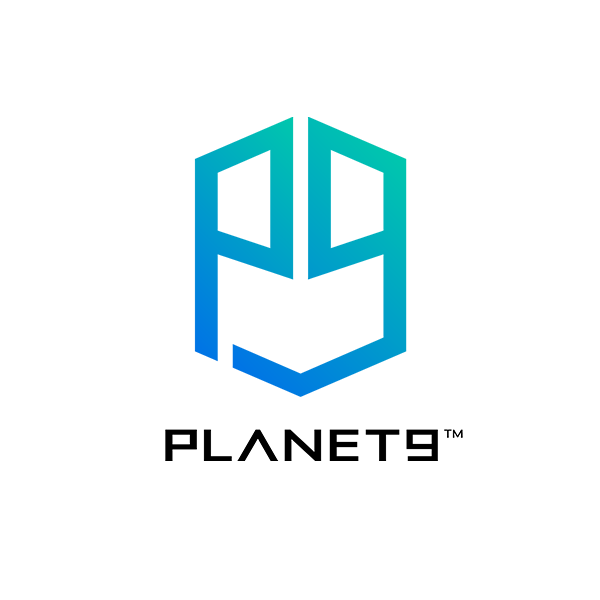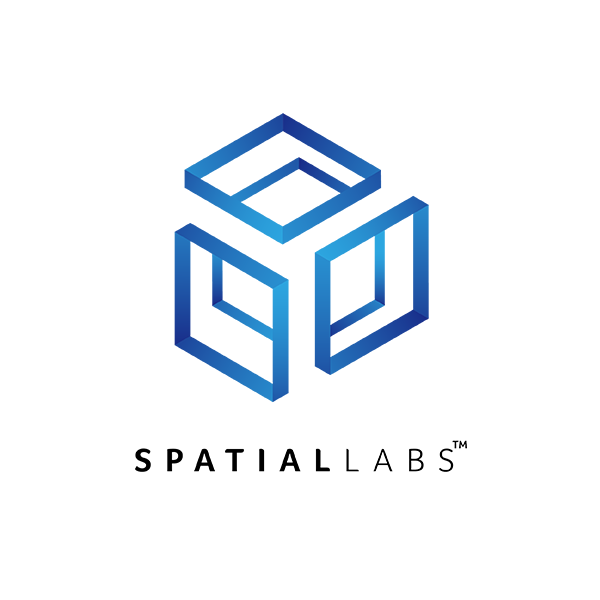-
How to Change Your OS Language in Windows 11
Changing the language system on a Windows 11 computer is simple once you know where the settings are. Whether you bought a PC overseas, need an extra keyboard for bilingual work, or want to learn a new language, Windows 11 lets you switch your display language with only a few steps. This guide explains how to change Windows language settings, how to download new language packs, and what to do if parts of your PC stay in the original language.
Where to download language packs
Windows 11 includes dozens of language packs, but you need to download them before you can switch your display language. These packs change the interface for menus, notifications, the Start menu, File Explorer, Settings, and more.
Here is how to download a language pack:
* Open Settings.
* Click Time & language on the left.
* Select Language & region.
* Under Preferred languages, click Add a language.
* Search for the language you want.
* Select it and click Next.
* Make sure Language pack is checked.
* Choose any optional features you want, such as:* Language pack
* Text-to-speech
* Speech recognition
* Handwriting
* Click Install.
The download size is usually between 100 MB and 300 MB. Some languages also include speech recognition or handwriting support. You can install these features to improve dictation, voice typing, and pen input.
If your PC is managed by a company or school, you may need administrator permission to add languages.
How to change your OS language in Windows 11
Once the language pack is installed, the next step is to make it your Windows display language. This controls how Windows shows menus, system messages, Settings pages, notifications, and most built-in apps. Changing the display language here is the core step that updates the overall experience across your computer.
Follow these steps:
* Open Settings.
* Select Time and language.
* Choose Language and region.
* Under Windows display language, select the new language from the drop down menu.
* Sign out and sign back in so Windows can apply the changes.
After you sign back in, the interface should appear in the new language. This includes system menus, quick settings, the lock screen, and many built-in apps.
Another option is to change the display language while installing the language pack. When the download screen appears, check Set as my Windows display language before clicking Install.
Why Windows sometimes stays in the original language
Even after you change Windows language settings, it is possible to see parts of your PC still showing the old language. This happens for a few reasons.
1. Missing language features
If the typing tools, handwriting tools, or speech features are not installed, Windows may not change everything.
2. Apps that do not follow system language
Some older desktop apps only support one language and will ignore your settings.
3. System components that need a full restart
Certain parts of Windows only update after a reboot.
4. Microsoft account sync settings
If language preferences are synced across your devices, Windows may switch back to your old language.
5. Region settings do not match your language
A mismatch between your language and region can cause some interface elements to remain unchanged.
6. Windows version limitations
Devices configured with region-locked ISOs or company policies may not allow full language switching.
How to fix language problems in Windows 11
If you still see the old language after switching, try these solutions.
1. Install all language features
Go to Settings → Time and language → Language and region.
Select your language, then open Language options.
Make sure these items are installed:
* Language pack
* Basic typing
* Handwriting
* Speech
2. Set your language as the top priority
Move your new language to the top of the Preferred languages list.
3. Restart your PC
A full restart helps Windows reload system components.
4. Adjust your region settings
In Language and region, make sure Country or region and Regional format match the language you want to use.
5. Turn off language sync
Go to Settings → Accounts → Windows backup. Turn off Remember my preferences, then uncheck Language preferences.
6. Reinstall the language pack
Remove the language and add it back again.
7. Update Windows
Go to Windows Update and install the latest updates. Some language fixes are included in system patches.
Advanced fix: using PowerShell to force Windows to apply the full language pack
If none of the normal methods work, there is an advanced solution discovered by a Reddit user heltonfonias. In some cases, the Settings app installs only a partial version of the language pack, which causes parts of the interface to stay in the original language. This PowerShell method forces Windows to install the complete language pack and then applies it across the entire system, including the welcome screen.
Important warnings
* Only use this method if standard settings do not work.
* You must run PowerShell as Administrator.
* The process may look frozen for up to 20 minutes.
* Back up your important files before making system-wide changes.
* Your PC will restart automatically.
What this method does
* Installs the complete language pack.
* Sets the language as your user display language.
* Applies the language to the system account and welcome screen.
* Forces a system reboot to complete the process.
PowerShell script (advanced users only)
Replace "pt-BR" with the language code you want, such as "en-US" or "fr-FR".
# --- Variables ---
$targetLanguage = "pt-BR" # Replace with your preferred language code
# --- Install the full language pack ---
Install-Language -Language $targetLanguage
# --- Set the Windows display language for the current user ---
Set-WinUserLanguageList $targetLanguage -Force
# --- Apply the language to the system and welcome screen ---
Copy-UserInternationalSettingsToSystem -WelcomeScreen $True
# --- Restart to complete the process ---
Restart-Computer -Force
When this method is useful
Use this script only if:
* Windows Settings installs the language but does not fully switch
* Parts of Windows stay in English or another language
* Your PC was installed using a foreign ISO
* You have tried reinstalling the language pack and restarting without success
For most users, the standard Settings method is enough. This PowerShell option is meant for persistent cases where Windows refuses to change languages properly.
Final thoughts
Changing the display language in Windows 11 is usually quick and simple. Once the language pack is installed, Windows will update menus, system messages, and apps to match your preferred language. If pieces of the interface stay unchanged, adjusting your regional settings, turning off sync, or reinstalling the pack usually solves the problem. For the rare cases where none of these methods work, the advanced PowerShell fix can force Windows to install the full language system and apply it across the entire device.
To learn more about Windows 11 or explore related guides, check out these helpful articles:
* Still using Windows 10? Here is why it is time to switch to Windows 11
* Best budget laptops from Acer that run Windows 11
* 8 ways to personalise your Windows 11 PC
Recommended Products
Acer Swift Edge 14
Buy Now
Acer Aspire 16 AI
Buy Now
Acer Aspire 14 AI
Buy Now
-
Elevate Your Glasses Free 3D Gaming With the Acer SpatialLabs View Pro 27 Monitor
Gamers of the world, join us and experience how the Acer SpatialLabs View Pro 27 monitor unleashes a new era of glasses-free 3D gaming. Step beyond flat 2D visuals and into the next dimension of play with a monitor built to redefine immersion. This isn’t retro 3D. This is a next-generation stereoscopic gaming monitor built for today’s hardware and tomorrow’s experiences.
As it says on the label, a 3D monitor liberates gaming and other pursuits from the banal 2D canvas, enhancing visualization and interaction across the board. Stick with us as we introduce the essentials of SpatialLabs technology, and how it promises to redefine gaming. Once we’ve covered the basics, we’ll check out the Don Corleone of 3D gaming monitors: Acer SpatialLabs View Pro 27.
SpatialLabs technology: 3D, glasses-free
Acer’s SpatialLabs is a next-gen suite of spatial computing solutions, designed to enhance 3D creation, visualization and interaction. Put simply, SpatialLabs delivers glasses-free 3D by harnessing the stereoscopic effect. That’s all very well, we hear you say, but how does glasses-free 3D work?
Acer SpatialLabs View Pro 27 is equipped with a stereoscopic camera that tracks the user's head and eye position. A 2D/3D switchable lenticular lens layered on the 27" Ultra HD (3840 x 2160) 160 Hz display then projects slightly different images to each of your eyes for an immersive 3D experience. The result is glasses-free 3D worlds where very detail jumps out of the screen, blurring the lines between gaming and reality.
SpatialLabs displays redefine gaming by delivering real depth, 3D texture, and effects that pop-out of the screen without bulky 3D glasses, making gaming worlds insanely immersive and lifelike. Add a pinch of AI depth rendering, an advanced AI-driven sound system and you’ll swiftly enter a beyond-real cinematic gaming experience that you won’t soon forget.
https://youtu.be/acmGEovxgEw
What else is it used for?
Aside from gaming, the applications of SpatialLabs technology are pretty diverse, including 3D gaming, entertainment, and real time 3D image and video creation. Other professional uses include engineering and product design, where immersive 3D models can streamline and improve the product development process. And lets not forget our friends in the medical field, especially all the dentists getting onboard with SpatialLabs technology. But let’s get back to gaming!
The revolution starts now
Acer SpatialLabs View Pro 27 is our flagship 27-inch 3D display, crafted to meet the needs of gamers, creators, developers and professionals in all fields. There are a couple of different View 27 displays floating about. Our sights are on the Acer SpatialLabs View Pro 27 Monitor - ASV27-2P, yours to keep for $3,399.99. Let’s take a look at the tech-specs of this delightful display.
* Screen: 27" Ultra HD (3840 x 2160) 160 Hz, Stereoscopic 3D Display
* Max Res: 3840 x 2160, 2K per eye in 3D mode
* Aspect Ratio: 16:9
* Panel Technology: AMD FreeSync™ Premium certified
* Inputs: DisplayPort, HDMI
* Response Time: 5 ms
* Brightness: 400 Nit
* Viewing Angles: 178°
* Monitor Features: 2D/3D Switchable Lenticular Lens; Eye Tracking; SpatialLabs Experience Center Pro
* Audio: 2 x 2.5 W speakers
* Interfaces/Ports: HDMI 2.1 x 1, DisplayPort x 1, USB x 4
* Power Consumption: < 234 Watts (Operating), < 1 Watt (Off-Mode)
* Dimensions: 17.9”-23.8” x 24.7” x 9.7”
* Weigh: 20.7 lbs
Enter the new frontier
As you can see from these enviable tech-specs, this is a 27-inch 4K display ready to deliver the crispest of textures and detailed environments at a rapid 160 Hz refresh rate guaranteed to keep action fluid and fun during fast-paced gameplay. On top of this, low input lag ensures responsiveness is never sacrificed for 3D visuals.
No light, low light, no problem
If you’re a dim-room gamer wondering how these eye tracking cameras are going to see you in your gaming cave, then wonder no more. Acer SpatialLabs View Pro 27 is optimized for extremely low light settings, so no matter how dark you go, 3D depth stays locked to your viewpoint, even if you change position mid-game. 400 Nit brightness ensures that you can see exactly what’s going on on your Acer SpatialLabs View Pro 27 display in low light settings, or complete darkness.
Vision and sound
This display has a Color Gamut Delta E < 2 ensuring beyond accurate visuals for cinematic gaming. If you’re concerned about color consistency as you switch between 2D and 3D, don’t be as the Delta E < 2 Color Gamut protects against the dreaded washed-out depth effect.
Let’s not neglect sound! Acer Immerse Audio is an AI-driven sound system that uses beam forming and head tracking to create an enveloping spatial audio experience. Acer Immerse massively boosts realism in FPS and story-driven games by shifting the audio as you move, perfectly matching every on-screen perspective change in real time.
Gaming, enhanced
At time of writing there are approximately 225 SpatialLabs supported games, with more titles regularly joining the 3D realm. Here’s a taster of some of our favorites:
* Baldur's Gate 3
* Black Myth: Wukong
* Dark Souls III
* Dying Light
* Final Fantasy VII Remake
* Fallout 4
* God of War
* Street Fighter 6
* Tekken 7
If you’re tired of 2D and looking for gaming immersion, then look no further, as this display has everything you need to explore your favorite games in 3D. RPGs, racing, first-person exploration, or even horror titles all benefit from the Acer SpatialLabs View Pro 27 display. Once you’ve seen these worlds in 3D, there’ll be no returning to the drabness of 2D gaming!
Adaptability as standard
The Acer SpatialLabs View Pro 27 display is built with complete flexibility in mind. Whether it’s powering interactive exhibits, classrooms, or gaming dens, the display’s ErgoStand allows easy tilt, swivel, pivot, and height adjustments to suit any setup. Full VESA support for alternative mounting, as well as the option to pair it with a mini PC means that it can be turned into a dynamic, standalone centerpiece in virtually any environment.
The future of immersive gaming
We hope you’ve enjoyed our foray into the immersive world of the Acer SpatialLabs View Pro 27 monitor. Let’s face it, the era of 2D gaming is swiftly drawing to a close, and glasses-free 3D is the natural next step for absorbing gaming experiences.
This is a display that speaks for itself: 4K clarity, 160Hz smoothness, accurate colors, and dynamic AI powered spatial audio, add depth and endless atmosphere to your gameverse. As the library of 3D titles grows, SpatialLabs promises to reshape how gamers experience and interact with their environments. Acer SpatialLabs View Pro 27 monitor delivers a completely new way to play, and a glimpse at where the next generation of immersive 3D PC gaming is headed.
Recommended Articles
27" Acer SpatialLabs View Pro 27 Monitor
Buy Now
15.6" Nitro SpatialLabs View Monitor
Buy Now
Acer Aspire 3D 15 SpatialLabs Edition Laptop
Buy Now
-
How to Increase Your Internet Speed
Improving your internet speed starts with understanding what affects it and what you can do to make it faster. Many people look up how to increase internet speed because their connection feels slow, buffers during streaming, or drops during video calls. The truth is that your provider’s advertised speeds are often the theoretical maximum, not what you get at home every day. Several outside factors can weaken your connection, from old hardware to Wi-Fi interference. In this guide, you will learn why your internet might feel slow, how to test your internet speed, and how you can increase internet speed with simple fixes you can do today. This article covers everything you need, so you will not be left with unanswered questions.
The importance of internet speed
Internet speed affects almost everything you do online. A fast and stable connection makes streaming smoother, downloads quicker, and online games more responsive. It also helps video calls stay clear without lagging or freezing. Even simple tasks like browsing websites feel faster when your connection is strong.
Many homes now have multiple devices connected at the same time. Phones, laptops, tablets, TVs, smart speakers, and gaming consoles all share the same network. If your internet speed is too low, these devices compete for bandwidth and slow each other down. Strong internet speed ensures your entire household can work, study, and relax without interruptions.
Good internet speed also matters for security. When your network struggles, updates may fail to install correctly, leaving your devices exposed. A stable connection keeps everything up to date and working the way it should.
Overall, faster internet improves convenience, productivity, and the quality of your online experience.
Why your internet speed is not always what the provider advertises
Internet providers often promote speeds that represent the highest possible performance under perfect conditions. In reality, most people never see those exact numbers at home. Advertised speeds are based on laboratory-style tests where the connection is wired, isolated, and free from interference. At home, your speed depends on real-world conditions that are rarely ideal.
Another reason for the difference is network congestion. When many people in your area use the internet at the same time, your provider’s network can slow down. This is common during peak hours, such as evenings when everyone is streaming video, downloading files, or gaming online. Even if you pay for a high-speed plan, you share parts of the network with other households.
Your provider may also use “up to” language in your contract. This means they are promising a maximum speed, not a guaranteed one. While this is legally allowed, it often leads customers to expect far more than what their actual setup can deliver.
Finally, the type of connection matters. Fibre connections usually provide speeds close to what is advertised. Cable, DSL, and satellite connections vary more because of distance, line quality, and weather conditions. This is why two people with the same plan can still get different results.
Outside of your provider, what other factors affect your internet speed
Even if your provider delivers the correct speed to your home, many things inside your house can still slow it down. Here are the most common factors:
* Your Wi-Fi router
Older routers may not support faster speeds. Placement also matters. Walls, floors, metal appliances, and furniture can weaken the signal.
* Device limitations
Some devices cannot use faster Wi-Fi bands. For example, many older laptops and phones only support the 2.4 GHz band and not the faster 5 GHz band. If a device cannot connect to 5 GHz, it will stay on the slower band even if your router supports higher speeds. Outdated Wi-Fi chips, old network drivers, and limited hardware can also prevent devices from reaching modern speeds. Background apps and downloads can slow devices even further.
* Signal interference
Microwaves, cordless phones, Bluetooth devices, baby monitors, and neighbours’ Wi-Fi networks can disrupt your signal.
* Distance from the router
Wi-Fi loses strength as you move farther away. Rooms on different floors or behind thick walls often get noticeably slower speeds.
* Wired vs wireless connections
Ethernet cables provide the most stable speeds. Wi-Fi is more convenient but much more affected by distance and interference.
* Software problems
Malware, outdated operating systems, and heavy browser extensions can slow devices and make your connection feel weaker than it actually is.
Understanding internet types and Wi-Fi bands
Your internet speed also depends on the type of connection you have and the Wi-Fi band your devices use. These two factors can create major differences in how fast your home network feels, even if you pay for a high-speed plan.
Types of home internet
Different internet technologies perform very differently in real-world conditions:
* Fibre internet
The fastest and most reliable option. It uses light signals through fibre-optic cables and often delivers speeds close to what your provider advertises.
* Cable internet
Uses the same coaxial cables as cable TV. It can be fast, but speeds may drop during busy hours when many people in your neighbourhood are online.
* DSL internet
Uses old telephone wiring. It is slower than fibre and cable, and speed drops the farther you are from the provider’s service hub.
* Fixed wireless
Provides internet through a wireless signal from a nearby tower. Performance depends on distance, weather, and obstacles.
* Satellite internet
Available almost anywhere, but speed can be limited. Latency is usually higher because the signal travels long distances.
Knowing your connection type helps you understand what speeds you can realistically expect.
2.4 GHz vs 5 GHz vs 6 GHz Wi-Fi bands
Most modern routers offer multiple Wi-Fi bands. Each band has different strengths:
* 2.4 GHz band
Slower but reaches farther. Best for older devices or rooms far from the router. It is also more crowded because many household devices use this frequency.
* 5 GHz band
Much faster but has a shorter range. Ideal for laptops, phones, and smart TVs that are in the same room or nearby. Less interference and better performance for streaming and gaming.
* 6 GHz band (Wi-Fi 6E and Wi-Fi 7)
The fastest option with very low congestion. Works best for devices that support it and perform closest to the router. Great for high-speed downloads, 4K and 8K streaming, and gaming.
Why this matters
If a device only supports the 2.4 GHz band or does not support Wi-Fi 6 or Wi-Fi 6E, it cannot reach the full speed of a modern internet plan. Likewise, even the fastest plan will feel slow on DSL or a dated router.
Choosing the right band and understanding your connection type helps you get the best performance out of your network without guessing.
How to test your internet speed
Testing your internet speed is the easiest way to see what you are actually getting compared to what you are paying for. A simple test can show your download speed, upload speed, and ping. These numbers help you understand whether the problem is with your provider, your home setup, or a specific device.
Start by using a trusted speed test tool. Popular options include Speedtest by Ookla, Fast.com by Netflix, or your internet provider’s own testing page. These tools measure your connection in real time and give results in a few seconds.
Before running the test, make sure to follow these steps for the most accurate results:
* Use a wired Ethernet connection if possible. This removes Wi-Fi interference and shows your true maximum speed.
* If you must use Wi-Fi, stand close to your router. This helps reduce signal loss.
* Close apps and downloads on your device. Background activity can lower your test results and make your internet look slower than it really is.
* Run the test on more than one device. If one device is slow and others are fine, the issue is likely with that device, not your internet service.
* Test at different times of the day. Evening hours often show slower speeds due to network congestion in your area.
When you finish testing, compare your results to the speeds on your internet plan. If the results are much lower than expected across multiple devices and connection types, the issue may be on your provider’s end. If only certain devices or areas of your home are slow, you can focus on fixing your home setup instead.
Tips to help you get faster internet at home
There are several practical steps you can take to improve your internet speed without upgrading your plan. These tips help you reduce interference, strengthen your Wi-Fi signal, and make sure your devices perform at their best.
* Move your router to a better location.
Place it in a central, open area of your home. Avoid corners, closets, and behind large furniture. Higher positions, like on a shelf, often give better coverage.
* Restart your router regularly.
Routers can slow down over time because of memory buildup or minor glitches. Restarting it once every week or two can refresh your connection.
* Use the 5 GHz band when possible.
If your router offers both 2.4 GHz and 5 GHz, switch capable devices to the 5 GHz network. It is faster and less crowded, although it works best at shorter distances.
* Connect important devices with Ethernet.
Gaming consoles, PCs, and smart TVs benefit from a wired connection. Ethernet gives you the fastest and most stable speeds.
* Reduce Wi-Fi interference.
Keep your router away from microwaves, cordless phones, baby monitors, and thick walls. Changing your Wi-Fi channel in the router settings can also help in crowded apartment buildings.
* Update your router’s firmware.
Manufacturers release updates that fix bugs and improve performance. Most routers let you check for updates in the settings menu.
* Upgrade old equipment.
If your router is more than five years old, it may not support modern speeds. Replacing it can instantly improve your network. The same applies to old devices that cannot use faster Wi-Fi standards.
* Limit the number of active devices.
When too many devices are streaming, downloading, or gaming at once, your network slows down. Disconnect devices you are not using.
* Scan your devices for malware.
Malware can secretly use your bandwidth. Regular scans help keep your devices running smoothly.
These steps can make a noticeable difference in your day-to-day internet performance. Combined with proper speed testing and a clear understanding of how your network works, they help you increase internet speed at home without confusion or guesswork.
Conclusion
Improving your internet speed is easier when you understand what affects it. Once you know how to test your connection and identify the real causes of slow performance, you can fix most problems on your own. Router placement, device limitations, signal interference, and outdated hardware all play a major role in how fast your network feels. With the right steps, you can increase internet speed without confusion and make your home connection more reliable for work, streaming, and gaming.
If you want a more powerful and stable network, upgrading your router is one of the most effective changes you can make. Acer offers several strong options for different homes and budgets:
* Acer Predator Connect T7 Wi-Fi 7 Mesh Router: A future-ready mesh system that brings the benefits of Wi-Fi 7, including faster speeds and much lower latency. It is ideal for large homes or anyone who wants the most advanced performance available.
* Acer Connect Vero W6m (Wi-Fi 6E Mesh Router): A high-performance mesh router with Wi-Fi 6E support and strong coverage. It also uses recycled materials, which makes it a good pick for anyone who wants both speed and sustainability.
* Predator Connect W6x Wi-Fi 6 Gaming Router: A fast and reliable Wi-Fi 6 router built for gaming and heavy streaming. It has features that keep ping stable during online play and handle multiple devices without slowing down.
With the right setup and the right hardware, you can enjoy faster internet throughout your home and avoid the everyday frustrations of lag, buffering, and dropped connections.
Recommended Products
Acer Predator Connect T7 Wi-Fi 7 Mesh Router
Buy Now
Acer Connect Vero W6m (Wi-Fi 6E Mesh Router)
Buy Now
Predator Connect W6x Wi-Fi 6 Gaming Router
Buy Now
-
Check Out Acer's Latest Swift Go 16 Laptop with AI Capabilities
Copilot+ PCs like the Acer Swift Go 16 seamlessly integrate AI into the Windows experience, perfectly balancing productivity, style, and innovation, and allowing users to streamline their tasks and work more efficiently.
What is a Copilot+ PC?
Copilot+ delivers a modern twist to the traditional Windows we know and love, with Microsoft calling them the fastest, most intelligent Windows PCs ever built. They include an impressive 40+ TOPS and all-day battery life to support your daily workload on a single charge. Copilot+ PCs boast an all-new high-performance Neural Processing Unit (NPU) and are 20 times more powerful and up to 100 times more efficient at running AI tasks. They are even equipped with enhanced security features to keep users secure at all times. Let’s take a deeper dive into some handy Copilot+ features.
Copilot Chat
Microsoft has introduced its very own AI assistant to help users complete tasks more quickly. Copilot Chat integrates across Microsoft 365 apps and can draft reports, summarize meeting minutes, analyze data, or reword paragraphs, allowing users to focus on other things. Moreover, Copilot Chat also answers questions in simple terms, so users do not need to learn computer jargon or commands.
Recall
Have you ever wanted to find something on your computer but can no longer remember where it is? The Recall feature on Copilot+ PCs lets users quickly locate information they have seen before on their PC using an explorable timeline. Users can even describe how they remember the information in just a few short words, and Recall will retrieve it.
Live captions
Copilot+ PCs can also translate live or video audio into another language in real-time, making it easier for users to work across global teams. This handy feature displays live captions for video calls, meeting recordings, live discussions, or clips without subtitles, and even works offline.
Introducing the Acer Swift Go 16
The Acer Swift Go 16 laptop - SFG16-72T-95Z6 is a solid companion for wherever life takes you. It includes a powerful Intel® Core™ Ultra (Series 2) processor and Copilot+ to effortlessly handle AI tasks and deliver reliable performance for intense work sessions. Let’s take a closer look at its specifications.
Specifications
* Operating System: Windows 11 Home
* Processor Type: Intel® Core™ Ultra 9 185H processor
* Processor Speed: 2.30 GHz (5.10 GHz turbo)
* Processor Core: Hexadeca-core (16 Core™)
* Standard Memory: 16 GB
* SSD Capacity: 1 TB
* Display Screen Technology: LCD
* Screen mode: WUXGA
* Screen Resolution: 1920 x 1200
* Speakers: 2
* Bluetooth: 5.3 or above
* Fingerprint reader: Yes
* Ports: HDMI, USD x 4, Audio line in / out
* Height: 0.59 inches (1.49 cm)
* Width: 14 inches (35.56 cm)
* Depth: 9.6 inches (24.38 cm)
* Weight: 3.53 lb (1.60 kg)
Acer Swift Go 16 features
The Acer Swift Go 16 has everything required to stay connected and productive, so users can focus on getting their tasks done. Here are some more of its impressive features.
1. Light and portable
Weighing just 3.53 lb (1.6 kg), the Acer Swift Go 16 is light enough to carry in a laptop sleeve or backpack on trips and commutes. Moreover, its sleek, ultra-thin design includes a laser-etched cover that opens 180°, giving a touch of class to any look.
2. Built-in AI tools
The Acer Swift Go 16 offers a range of intelligent AI solutions to transform your work style. With built-in Copilot+ that supports creativity and collaboration, and AcerSense™ that lets you access the device’s AI features in one place, the Acer Swift Go 16 is optimized for a user-friendly AI experience. Acer PurifiedVoice™ 2.0 suppresses unwanted background noise, while Acer PurifiedView™ 2.0 delivers razor-sharp resolution and portrait refinement features like automatic framing and gaze correction.
3. Four vivid display configurations
Bring content to life with a WUXGA display resolution of 1920 x 1200 pixels. This provides more screen real estate that is perfect for multitasking, as well as sharper visuals for enhanced precision.
Acer Swift Go 16: the takeaway
The Acer Swift Go is an impressive blend of productivity, cutting-edge technology, and style, while offering built-in AI features as standard. It was also designed with environmentally conscious post-consumer recycled materials, 100% recycled packaging, and responsible manufacturing practices, so you can be kind to the planet as you work. Get yours today on the Acer store, or check out our range of other AI-powered laptops.
Recommended Products
Acer Swift Go 16
Buy Now
Acer Swift 14 AI
Buy Now
Acer Swift X 14
Buy Now
-
How to Fix Task Host Windows Preventing Shutdown
If your PC shows a “Closing 1 app and shutting down” message that lists Task Host Window as the app that needs to close, it means Windows is still trying to finish a background task before powering off. The dialog often includes a note like “Task Host is stopping background tasks” with a reference to RegisterUserDevice under Microsoft’s Device Directory Client. In this guide, you will learn what Task Host Windows is, why Task Host Window prevents shutdown, and the steps you can take to stop the issue from happening again.
What is Task Host Windows?
Task Host Windows is a built-in Windows process that appears during shutdown when a background task has not finished running. You normally never see it while using your PC. It only shows up in the “Closing 1 app and shutting down” screen, where Windows lists it as the app that is stopping shutdown.
Even though it looks like a regular app in that dialog, it is actually a system process that checks whether any background tasks still need to close before the PC powers off. When Windows detects unfinished work, such as syncing user data, finishing a scheduled task, or shutting down a device registration service, Task Host Window becomes the placeholder that Windows displays to you.
Windows shows this message so you can cancel the shutdown and avoid interrupting something that is still running in the background. It works similarly to the warning you get for unsaved documents. The difference is that in this case the “app” is a system process that manages tasks you usually cannot see.
In simple terms, Task Host Windows is not the cause of the problem. It is the warning mechanism Windows uses when a background task fails to close correctly.
Why Task Host Window prevents shutdown even when no apps are open
Task Host Windows appears during shutdown when Windows detects a background process that has not finished running. Even though you may not have any apps open, Windows still has scheduled tasks, sync services, and system processes running quietly in the background. If one of these tasks does not close properly, you see the warning that Task Host Window is preventing shutdown.
A common example is the task:
<strong>\Microsoft\Windows\DeviceDirectoryClient\RegisterUserDevice</strong>
This task handles user-device registration for Microsoft services. It usually shuts down quickly, but when it hangs, Windows pauses the shutdown process to avoid data loss or corruption. Because this task works behind the scenes, the message makes it seem like something mysterious is blocking the shutdown even though nothing is open on your screen.
This problem often behaves like a bug. Windows is supposed to close background tasks silently, but sometimes a task becomes slow, fails to release memory, or gets stuck after a system update or sign-in event. When that happens, Windows cannot shut down safely and Task Host Windows becomes the messenger.
These are the most common reasons you see the warning even with no apps open:
* A scheduled task triggered right before you tried to shut down
* A user profile or sign-in service that failed to close correctly
* A sync or authentication task that stayed active
* A Windows update process still running in the background
* A device registration task that froze or took too long to stop
In short, Task Host Window prevents shutdown because a background task is stuck, not because you did anything wrong. Once the underlying task is fixed or cleared, your PC will shut down normally again.
How to fix the issue
There are a few simple ways to stop Task Host Window from blocking shutdown. These fixes address the background tasks that tend to get stuck, especially after Windows updates or sign-in events.
1. Click “Shut down anyway”
When the “Closing 1 app and shutting down” screen appears, you will usually see a button labeled Shut down anyway. Clicking it forces Windows to close the task that is stuck. In most cases, this does not cause problems because the task is often a minor registration or sync service.
This option works as a quick fix, but the issue may return if the background task fails again.
2. Disable Fast Startup
Fast Startup can cause some background tasks to remain half-active between shutdowns. Turning it off often prevents the Task Host Window message from appearing.
Here is how to disable it:
* Open Control Panel.
* Select Hardware and Sound.
* Click Power Options.
* On the left, select Choose what the power buttons do.
* Click Change settings that are currently unavailable.
* Scroll down to Shutdown settings.
* Uncheck Turn on fast startup.
* Click Save changes.
After turning off Fast Startup, restart your PC normally and test a shutdown.
3. Run the Windows Update troubleshooter
Sometimes the task that gets stuck is tied to a recent update. Running the Windows Update troubleshooter can clear out pending or corrupted update tasks.
Here is how to do it:
* Open Settings.
* Go to System.
* Select Troubleshoot.
* Click Other troubleshooters.
* Look for Windows Update.
* Click Run.
Let the troubleshooter complete, then restart your computer.
4. Check for pending Windows updates
A stuck or incomplete update can cause background tasks to hang during shutdown. Installing the latest updates often clears the issue.
Here is how to check for updates:
* Open Settings.
* Go to Windows Update.
* Click Check for updates.
* Install anything that appears.
* Restart your PC when the update completes.
If an update was waiting in the background, installing it usually stops the Task Host Window message from returning.
Conclusion
The Task Host Window message can be confusing because it appears even when no apps seem to be running. In most cases, it simply means Windows is trying to close a background task that did not finish correctly. By trying the fixes above, such as disabling Fast Startup or running the Windows Update troubleshooter, you can usually prevent the message from appearing again. Once the underlying task is cleared, your computer should shut down normally without interruptions.
Recommended Products
Acer Swift Edge 14 AI
Buy Now
Acer Aspire 16 AI
Buy Now
Acer Aspire 14 AI
Buy Now
-
Workshop Upgrades and Where to Get Upgrade Items in ARC Raiders
Upgrading the Workshop in ARC Raiders is the core of your long-term progression. Every station in the Raider Den unlocks new weapons, mods, grenades, medical tools, and utility items, and each can be upgraded to Level 3. However, most guides make one major mistake: they tell you to start with the Gunsmith or Medical Lab.
The truth is that the Refiner should always be upgraded to level 2 first.
The Refiner is the backbone of the entire system because it allows you to convert basic materials into rare components. Items such as Mechanical Components, Electrical Components, Crude Explosives, Advanced Components, and even ARC Circuitry can all be crafted through the Refiner as soon as the station is leveled up. This removes the early-game bottleneck where players are forced to hunt for random loot spawns or hope for lucky drops.
Once the Refiner is upgraded, every other Workshop station becomes dramatically easier to progress. The Gunsmith, Gear Bench, Medical Lab, Explosives Station, and Utility Station all require items that can be crafted directly from Refiner recipes. This means fewer farming runs, fewer dead maps, and a much smoother progression curve.
This guide covers every station, every upgrade level, and every required item. All locations and item sources have been verified and corrected to avoid the misinformation that appears in many early guides.
Refiner Station: Requirements, Unlocks, and How to Get Every Item
The Refiner is the most important early upgrade in the Workshop. Once it reaches level 2, it can produce many of the rare components required for every other station. This is why upgrading the Refiner first will save you significant time and reduce the amount of random scavenging you need to do.
Refiner Upgrade Requirements and Unlocks
Level
Materials Needed
Unlocks
1
60 Metal Parts, 5 ARC Powercells
Crude Explosives, Electrical Components, Mechanical Components
2
3 Toasters, 8 Fireball Burners, 5 ARC Motion Cores
Advanced Components, Gun Parts, ARC Circuitry
3
3 Motors, 6 Bombardier Cells, 10 ARC Circuitry
Power Rods, Mod Components
How to get all required materials
Metal Parts
Very common and found in nearly every industrial interior. Search garages, tool rooms, storage shelves, and mechanical work areas. Scrappy can also gather them.
ARC Powercell
Dropped by every ARC unit. Any robot you destroy can drop a Powercell. High density ARC areas naturally yield the most.
Toaster
Found reliably in residential and apartment interiors. Pattern House on the Dam Battlegrounds map is one of the best places to farm them. Search refrigerators, kitchen shelves, cabinets, and small kitchen storage areas.
Fireball Burner
Dropped by Fireball enemies. These appear most often
* inside buildings in Buried City
* occasionally in interior rooms in Dam Battlegrounds and Spaceport
Fireballs roll quickly and try to ignite you at close range, so take them out before they close the distance and loot their husk.
ARC Motion Core
Found on larger ARC units and inside ARC Probes and ARC Couriers.
Motor
A rarer industrial item. Found most reliably in large industrial buildings such as the Primary Facility on Dam Battlegrounds. Look on shelves, in storage containers, and inside mechanical workshops. Can also be found underneath the hood of random cars.
Bombardier Cell
Dropped by Bombardiers. Consistent places to find Bombardiers include
* Water Treatment to Loading Bay on Dam Battlegrounds
* Marana Park, Santa Maria Houses, and Plaza Rosa in Buried City
ARC Circuitry
Dropped by many ARC enemies, especially mid tier and heavy units such as Surveyors, Rocketeers, and Bombardiers. Once the Refiner reaches Level 2, it becomes craftable, which makes farming much easier.
Gunsmith Station: Requirements, Unlocks, and How to Get Every Item
The Gunsmith is one of the most valuable stations in the Workshop because it unlocks new weapons, higher-tier attachments, and late-game firepower. However, upgrading the Gunsmith becomes much easier once the Refiner is already leveled, since several required components can be crafted directly at the Refiner.
Gunsmith upgrade requirements and unlocks
Level
Materials needed
Unlocks
1
30 Rubber Parts, 20 Metal Parts
Basic weapons and early attachments
2
3 Rusted Tools, 5 Mechanical Components, 8 Wasp Drivers
Expanded weapon roster and improved attachment options
3
3 Rusted Gear, 5 Advanced Mechanical Components, 4 Sentinel Firing Cores
Elite weapons, tier 3 attachments, and top tier performance mods
How to get all required materials
Rubber Parts
Very common. Found in many residential and industrial interiors. You can also obtain Rubber Parts by recycling household items, buying from Celeste when available, or from Scrappy.
Metal Parts
Widespread in mechanical, garage, factory, and storage areas. Any industrial zone is likely to have some. Scrappy also collects them over time.
Rusted Tools
Found inside toolboxes, garages, construction interiors, and mechanical workshops. Dam Battlegrounds has the highest density of toolboxes, especially in industrial clusters. You can also find these in broken down buses.
Mechanical Components
Found in mechanical workshops and industrial interiors on every map. Dam Battlegrounds is one of the most consistent places to farm them early. You can also craft Mechanical Components once the Refiner reaches Level 1.
Wasp Driver
Dropped by Wasp ARCs. They spawn everywhere, but especially in open zones and colored danger areas. Good farming locations include:
* rooftops and elevated areas on all maps
* high alert or yellow zones
* outskirts of Buried City
Rusted Gear
A rare industrial salvage item. Found in the same locations as Motors and large mechanical scrap. Dam Battlegrounds and Spaceport are the best maps for finding Rusted Gear. Check heavy machinery rooms, industrial shelves, and equipment storage. Like, rusted tools, you can also find them in broken down buses, but at a lower appearance rate.
Advanced Mechanical Components
Dropped by mid and high tier ARCs. Good sources include
* Bombardiers
* Surveyors
* Bastions
You can also craft Advanced Mechanical Components once the Refiner reaches Level 2.
Sentinel Firing Core
Dropped by Sentinel turrets. They appear most often on rooftops, elevated ledges, and long-range vantage points. Consistent farming spots include:
* Research and Administration building in Dam Battlegrounds
* rooftops in Buried City
* high elevation perches overlooking chokepoints
Medical Lab Station: Requirements, Unlocks, and How to Get Every Item
The Medical Lab unlocks healing items, restoratives, and advanced medical tools. Higher levels give access to stronger healing options and faster recovery tools.
Medical Lab upgrade requirements and unlocks
Level
Materials needed
Unlocks
1
6 ARC Alloy, 50 Fabric
Basic medical items and early healing tools
2
8 Tick Pods, 2 Cracked Bioscanners, 5 Durable Cloth
Advanced healing recipes
3
5 Surveyor Vaults, 3 Rusted Shut Medical Kits, 8 Antiseptic
Instant healing and high-end medical items
How to get all required materials
ARC Alloy
Dropped by nearly every ARC unit. Any robot you destroy has a chance to drop Alloy. Farming high-density ARC areas will naturally build up large amounts.
Fabric
Common in residential interiors, clothing areas, offices, and abandoned apartments. Scrappy also gathers Fabric once upgraded.
Tick Pod
Dropped by Tick enemies. They usually appear in
* abandoned indoor structures
* basements and underground spaces
* dark corners of buildings in Buried City
* yellow and red high-risk enemy zones
Ticks cling to walls and ceilings, so check your surroundings and listen carefully for ticking sounds.
Cracked Bioscanner
Found inside medical buildings, especially
* the Hospital in Buried City
* clinic rooms on all maps
* medical storage areas and treatment rooms
Look at hospital beds, metal trays, and medical carts.
Durable Cloth
Created by refining Fabric at the Refiner or found rarely in residential interiors.
Surveyor Vault
Dropped by Surveyors. These large rolling ARCs are most common in
* swamp regions on Dam Battlegrounds
* flat open roads
* scattered high-risk patrol paths in Buried City and Bluegate
Surveyors emit a tall blue scanning beam that makes them easy to spot.
Rusted Shut Medical Kit
Found exclusively in medical interiors. The most reliable location is the Hospital in Buried City. Search patient rooms, supply rooms, treatment floors, and cabinets.
Antiseptic
Found inside pharmacies and medical storerooms. The best location is the Pharmacy in Buried City. Antiseptic can also appear in scattered clinic rooms across other maps. You can also craft these when you get Refiner level 2
Gear Bench Station: Requirements, Unlocks, and How to Get Every Item
The Gear Bench is responsible for crafting shields and Raider augment suits. Upgrading this station unlocks stronger shields and higher tier augments that significantly improve survivability and utility.
Gear Bench upgrade requirements and unlocks
Level
Materials needed
Unlocks
1
30 Fabric, 25 Plastic Parts
Light Shield, Medium Shield, basic augments
2
5 Hornet Drivers, 3 Power Cables, 5 Electrical Components
Heavy Shield and Mk. 2 augments
3
6 Bastion Cells, 3 Industrial Batteries, 5 Advanced Electrical Components
Mk. 3 augments
How to get all required materials
Fabric
Common in residential zones, clothing shops, and abandoned apartments. Scrappy also gathers Fabric.
Plastic Parts
Found in residential and office interiors, especially kitchen areas, storage rooms, and utility closets. Refined from basic items or collected by Scrappy.
Hornet Driver
Dropped by Hornet ARCs. These appear frequently in
* red and yellow danger zones
* open rooftops and elevated areas
* mixed ARC patrol groups with Wasps
Aim for the rear thrusters to bring them down quickly.
Power Cable
Power Cables spawn in electrical and industrial facilities. The best location is the Power Generation Complex in Dam Battlegrounds. Search drawers, cable racks, maintenance benches, and control room interiors.
Electrical Components
Found in many industrial and technological interiors. You can also craft Electrical Components using basic materials once the Refiner is upgraded.
Bastion Cell
Dropped only by Bastions. They spawn consistently in
* the north side of Piazza Roma in Buried City or Hydroponic Dome Complex in Dam Battlegrounds.
* certain high-value ARC zones on all maps
* industrial or fortified patrol areas
Climb rooftops to fight them safely and use cover to block attacks.
Industrial Battery
Appears in electrical and tech-heavy interiors. These rooms often contain server racks, computer clusters, or large generators. You can also buy them from Celeste for seeds.
Advanced Electrical Components
Found in technological buildings and high-tier loot rooms in Bluegate. You can also craft these using Wires and Electrical Components once the Refiner reaches level 2.
Explosives Station: Requirements, Unlocks, and How to Get Every Item
The Explosives Station unlocks grenades and specialized explosive tools. Higher levels grant access to fire effects, heavy fuze grenades, and utility explosives that are essential for both ARC combat and PvP.
Explosives Station upgrade requirements and unlocks
Level
Materials needed
Unlocks
1
6 ARC Alloy, 50 Chemicals
Gas Grenade, Light Impact Grenade
2
5 Pop Triggers, 3 Synthesized Fuel, 5 Crude Explosives
Fire-based explosives
3
3 Laboratory Reagents, 3 Rocketeer Drivers, 5 Explosive Compounds
Heavy Fuze Grenade and advanced explosive tools
How to get all required materials
ARC Alloy
Dropped by nearly every ARC enemy. Small, medium, and heavy ARCs all have a chance to drop Alloy. You will naturally accumulate a large supply while doing regular ARC farming.
Chemicals
Found in residential cleaning closets, industrial storerooms, and chemical supply areas. Chemicals can also appear in garages and utility rooms. Scrappy can also gather them for you.
Pop Trigger
Dropped by Pop enemies. Good locations include
* underground walkways in Bluegate
* interior homes in Bluegate
* small clusters inside buildings on Dam Battlegrounds
Pops move fast, explode on contact, and often appear in groups.
Synthesized Fuel
Purchased from Celeste starting at level 12. You can also find Synthesized Fuel in technical interiors, especially in the Water Treatment Control in Dam Battlegrounds or storage rooms in industrial facilities.
Crude Explosives
Found in industrial interiors and storage rooms across all maps. You can also produce Crude Explosives at the Refiner once you have enough Chemicals.
Laboratory Reagents
A rare scientific material found mostly in lab environments. Reliable spots include
* laboratory interiors in Dam Battlegrounds
* hospital and research wings with medical or chemical markers
Search shelves, metal tables, and lab benches.
Rocketeer Driver
Dropped by Rocketeer units. Rocketeers commonly appear in
* northwest Dam Battlegrounds near multiple husk spawns
* South Swamp Outpost
* Old Battleground
* Ben Welder’s Sunroof on Bluegate
Rocketeers hover in place and fire tracking missiles, so fight them from cover.
Explosive Compound
Found in industrial sections, particularly the industrial zone of Dam Battlegrounds and at workshops and refineries with chemical or hazard signage. The Explosive Compound will appear in crates, shelves, and supply racks. You can also make these at the Refiner.
Utility Station: Requirements, Unlocks, and How to Get Every Item
The Utility Station crafts tactical tools that support scouting, flanking, stealth, and team coordination. Higher levels unlock powerful gadgets like the Snap Hook and Tagging Grenade, which improve movement and situational awareness.
Utility Station upgrade requirements and unlocks
Level
Materials needed
Unlocks
1
6 ARC Alloy, 50 Plastic Parts
Binoculars, Smoke Grenade, Door Blocker
2
2 Damaged Heat Sinks, 6 Snitch Scanners, 5 Electrical Components
Lure Grenade
3
3 Fried Motherboards, 4 Leaper Pulse Units, 5 Advanced Electrical Components
Snap Hook, Tagging Grenade
How to get all required materials
ARC Alloy
Dropped by all ARC units. Any robot you destroy has a chance to drop Alloy. High-density ARC areas naturally yield more.
Plastic Parts
Found in residential interiors, office spaces, kitchens, and utility storage rooms. Many household items can be recycled into Plastic Parts. Scrappy also collects them once upgraded.
Damaged Heat Sink
Found in electrical and technological interiors. The most reliable location is the Control Tower in Spaceport. Search cabinets, tool trays, desks, and shelving units inside server-filled buildings.
Snitch Scanner
Dropped by Snitch drones. Snitches appear frequently in
* open sky paths above most maps
* scouting routes near ARC patrol groups
* elevated airspace paths in Bluegate and Dam Battlegrounds
Shoot the thrusters to down them, then loot the Scanner.
Electrical Components
Found in industrial and tech-heavy interiors. Electrical Components can also be crafted at the Refiner once you have the required base materials.
Fried Motherboard
Found in buildings marked with technological signage. Common locations include, server rooms, computer labs, electronic storage interiors across all maps. Search shelves, tables, and breachable tech compartments.
Leaper Pulse Unit
Dropped by Leapers. These enemies appear most often in
* high-risk zones on Dam Battlegrounds
* the area between Water Treatment and the Research and Administration building
* fortified spots on Buried City and Bluegate
Approach carefully, as Leapers are fast and deal heavy damage.
Advanced Electrical Components
Found in tech-heavy interiors and high-tier loot rooms. A reliable farming spot is Pilgrim’s Peak or Reinforced Reception in Bluegate. You can also craft Advanced Electrical Components at the Refiner.
ConclusionUpgrading every station in the Workshop is the core of long-term progression in ARC Raiders. Each bench expands what you can craft, improves the power of your gear, and gives you the tools needed to handle tougher ARC units and higher-risk zones. By starting with the Refiner and working through each station in a logical order, you reduce grinding, save rare materials, and make every raid more efficient.
With the right routes and an understanding of where each material comes from, you can reliably gather everything you need without wasting time searching in the wrong places. Whether you are crafting stronger shields, unlocking elite weapons, or preparing advanced medical supplies, a fully upgraded Workshop ensures you always have the gear to survive, extract, and take on the biggest challenges the ARC throws at you.
Recommended Products
Predator Helios 18 AI (RTX 5090)
Buy Now
Predator Helios Neo 18 AI (RTX 5070Ti)
Buy Now
Acer Nitro V 16S (RTX 5070)
Buy Now








